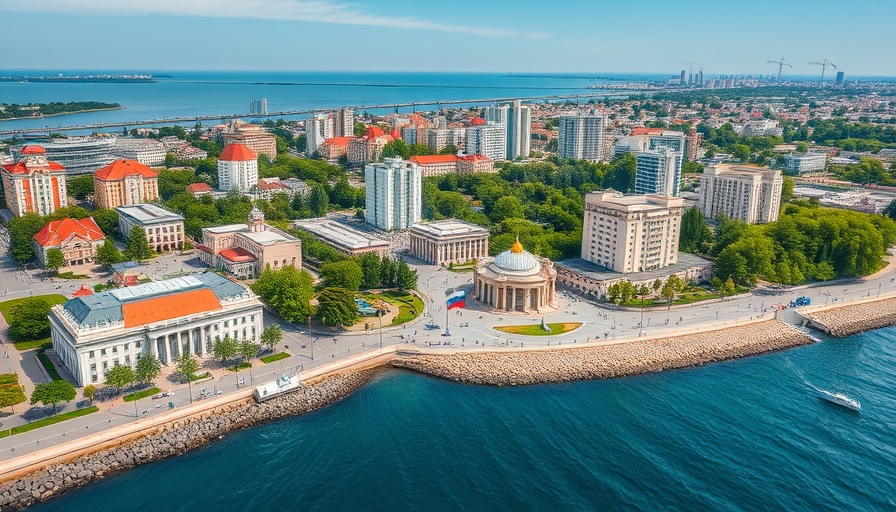
Crimea: Once a Sanctuary, Now a Battleground
Situated at the crossroads of Eastern Europe and the Black Sea, the picturesque region of Crimea has transformed dramatically. Once a thriving tourist destination seeing millions of visitors from Ukraine and Russia, today, it stands as a focal point of geopolitical tension and military conflict. While visitors used to bask along its historic shores, the ongoing war has ushered in a reality where joy is shadowed by the threat of drone strikes and military presence.
The Changing Face of Tourism in Crimea
Before the annexation by Russia in 2014, Crimea welcomed approximately six million tourists yearly. However, the onset of conflict and subsequent invasions has drastically altered the landscape of tourism. Reports indicate that Russian tourists now dominate, yet many avoid public areas due to the fear of military attacks. The situation reached new heights with Ukraine's recent underwater attacks aimed at severing crucial infrastructure, reflecting the ongoing volatility of the region.
Historical Context: Crimea’s Cultural Significance
Crimea has long held historical significance, hosting diverse civilizations ranging from the Greeks to the Ottomans. Its rich cultural tapestry symbolized unity and conflict alike, often reflecting broader regional power dynamics. Today, the peninsula's legacy is marred by modern conflict, as Russia claims Crimea righted historical wrongs, igniting vehement responses from Ukraine, which maintains its claim to the territory. Understanding this context enriches the narrative of current events, showing that Crimea's struggle is not only military but a battle for identity and recognition.
Political Implications: The Stakes for Local Residents
As the war entrenches itself further into daily life, the lives of Crimea’s residents have shifted. A significant portion of the population, now predominantly Russian, exhibits an attitude of acceptance towards the status quo, often downplaying the conflict's impact. Yet, many face challenges ranging from economic hardships to limited access to basic services. The local government's focus primarily favors Russian interests over those of its remaining Ukrainian constituents. This tension between national sentiments and personal experiences shapes the daily existence of Crimeans.
Perspectives from the International Community
Various international actors have weighed in on the conflict, complicating the narrative even further. Recently, discussions around recognizing Russian control over Crimea have surfaced, primarily during negotiations led by the U.S. Former President Trump suggested that a peace settlement might hinge upon such recognition. This proposition has sparked outrage among Ukrainians and promises to deepen divides within the region and among its supporters globally.
The Future of Crimea: Uncertain Waters Ahead
As military operations continue, the future of Crimea remains uncertain. The possibility of renewed tensions looms large as international relations shift. Many await developments that could reshape not just Crimea's fate, but the geopolitical landscape in Eastern Europe.
Call to Action: Stay Informed and Support Peace Efforts
The story of Crimea is one of pain, loss, and perseverance. It is a narrative that demands attention—and action. By engaging with the unfolding situation, whether through local dialogues, community forums, or supporting humanitarian efforts, residents can help steer a course towards resolution. Awareness is the first step toward fostering peace in a region that has borne so much strife.
As local community members and residents, staying informed about ongoing events and understanding the implications of such conflicts is vital. Local news updates, city council meetings, and community discussions provide avenues for engagement and action. Participate in neighborhood safety initiatives and local events that encourage dialogue around such critical issues. Each bit of knowledge fosters deeper connections and reinforces community resilience.
 Add Row
Add Row  Add
Add 



Write A Comment